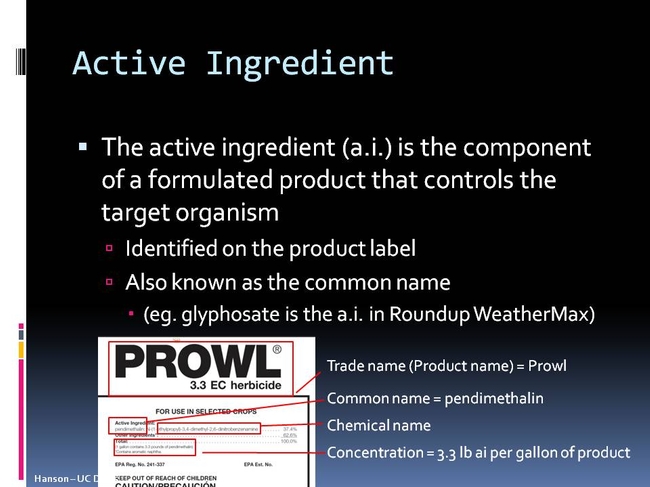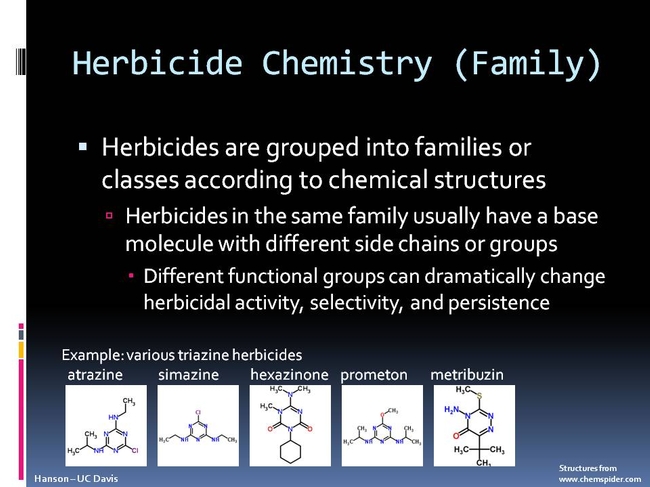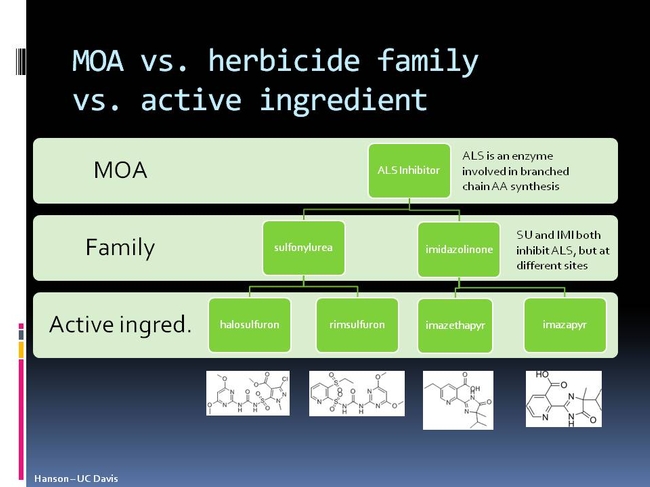When talking about chemical weed control, a lot of different terms are used to describe the chemicals and application techniques being used. Some are terms are pretty straight forward while others are a little more specific or specialized. I thought it might be a good time to run through a few commonly used terms. Feel free to add (via comments) any important terms that I miss and I’ll try to edit them in over time.
Preemergence (or preemergent) herbicides. Herbicides that are applied before the target weed germinates and emerges. Many, but not all, preemergence herbicides have little activity on existing vegetation. Instead, they act on the roots or shoots of newly germinated seeds – often killing the seedling before or right as they emerge from the soil.
Residual activity. Preemergent (or soil applied) herbicides have residual activity in that they continue to be active for several days, weeks, or months after application.
Postemergence (or postemergent) herbicides. These herbicides are applied to the foliage of the target weed after it has emerged from the soil. Some, but not all, postemergent herbicides also have preemergent activity while others have no activity once they reach the soil due to binding or rapid degradation.
Contact herbicides. This term generally refers to herbicides that only affect the tissue directly treated with the herbicide – the herbicide does not move to untreated parts of the plant after application. Good spray coverage is essential for acceptable control with contact materials.
Systemic (or translocated) herbicides. These herbicides can move from treated plant parts to untreated parts either through the xylem or phloem. For example, a systemic preemergent herbicide could be taken up by roots and moved to leaves. Or, a systemic postemergent herbicide applied to the leaves could move to other leaves or to roots. Typically, systemic materials work better on established perennial weeds than contact materials.
Tank mix. A mixture of two or more herbicides applied during the same application. Often times a tank mix is used to broaden the spectrum of weed control such as mixing a grass herbicide and a broadleaf herbicide for broad spectrum weed control. It is also common to mix a postemergent herbicide with preemergent herbicides to control any weeds present at the time as well as those that may emerge a bit later.
Trade name. This is the brand name of a commercial herbicide product that may contain one or more active ingredients, adjuvants, stabilizers, emulsifiers, or other inert ingredients. Herbicides are registered and labeled by their trade name and it is important to know that the same active ingredient may be available under different trade names. Roundup is the trade name for a common (actually the most common in the world) herbicide active ingredient, glyphosate. However, there are hundreds of trade named products with the same active ingredient made by different manufactures or sold for different markets.
Active ingredient. The active ingredient is the chemical molecule that has pesticidal activity on the target plant. We usually shorten the “chemical name” to a (somewhat) simpler “common name”. For example, the chemical N-(phosphonomethyl)glycine) is known by the common name “glyphosate”.

Herbicide family. Herbicides are generally grouped into families (or classes) according to chemical structures. Herbicides in the same families have a similar base structure but may have different side chains or functional groups that impart different activity, selectivity, and persistence.

Mechanism of action. This is usually a specific molecular target site for the herbicide. For example, glycine herbicides like glyphosate and sulfonylurea herbicides like chlorsulfuron work by inhibiting amino acid synthesis; however, they have different molecular targets in completely different amino acid synthesis pathways.
Mode of action. The mode of action of a herbicide is the overall manner in which a herbicide affects a plant at the tissue or cellular level. The MOA is often defined by a specific enzymatic or physiological pathway. Examples include photosystem II inhibitors, amino acid inhibitors, and several others.

The above figure shows an example of the relationships among active ingredients, herbicide classes, and mode/mechanism of action. Although they have fairly different meanings at the molecular level, we tend to use the terms mode of action and mechanism of action somewhat interchangeably at the weed management level – hopefully the physiologists and sticklers for detail will let that slide.
If knowledge is power, hopefully you are now ever so slightly more powerful when it comes to herbicide terminology!
Take care,
Brad